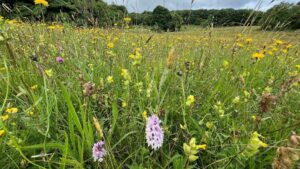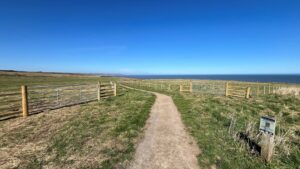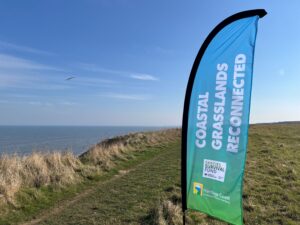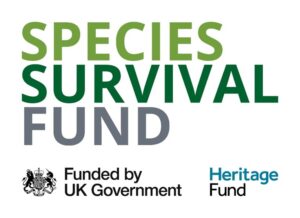Coastal Grasslands Reconnected

The Coastal Grasslands Reconnected Project aims to create and restore the wildflower rich magnesian limestone grasslands along the Durham Coastline and improve the connectivity between woodland coastal denes with the creation of mosaic habitats through hedgerow planting, tree planting, scrub planting, green hay application, and pond creation. The project will run until the end of February 2026 and is a partnership between Durham County Council, The National Trust, and Durham Wildlife Trust.
Funding
Coastal Grasslands Reconnected is 1 of 20 UK projects funded by the Government’s Species Survival Fund and has been awarded £975,150. The fund was developed by DEFRA and its arm’s length bodies to tackle habitat loss and halt the decline of species abundance by 2030. The fund is being delivered by The National Lottery Heritage Fund in partnership with Natural England and the Environment Agency. In addition, this project has been supported by £100,000 of funding from The National Trust which brings the total funding of the project to £1,075,150.
Capital work
The funding will support capital work and improved management of our coastal grassland habitats through fencing, water source installation for grazing, machinery purchase, baling, and baseline surveys. The project will run along the Durham Coastline covering 213 ha from Nose’s Point to Horden and will include improvements for a high tide roost area at Blackhall Rocks.
Our rare magnesian limestone coast supports unique plants and wildlife, so it is vital we protect these habitats and prepare roll-back areas for plants found on the cliff tops which are susceptible to erosion events. This will involve scrapping a top layer of soil away at some sites which have recently been used for growing crops, to expose the limestone soils.
Traditional grazing
A key part of the reversion process from cultivated land to natural habitats will involve putting up fencing at each site for cattle. Cultivated land is nutrient rich due to previous fertiliser application which means only a few dominant scrub species or recent crops will grow at these sites. Grazing helps to restore soil conditions and creates a variety of vegetation heights preventing the dominance of these scrub and crop species. The cattle’s hooves also churn up the ground in some parts exposing bare ground for wildflowers and other plants to seed.
The creation of mosaic habitats will help improve species recovery and biodiversity resilience. The project is another example of the transformation that the area continues to undergo since the large-scale environmental improvements to clear the coal mining waste at the turn of the millennium.
Engagement
Throughout the project there will be opportunities for volunteering in species monitoring (eg plant, insect, bird, and mammal surveys) and countryside management (eg tree and hedge planting). We will be working with local communities, youth groups, schools, and volunteers to listen to feedback and build a sense of ownership and pride. Look out for future volunteer opportunities and project updates on the Heritage Coast Facebook page and partner Facebook pages.
How can you help?
Did you know that you can contribute to nature by using your phone? If you go to the iNaturalist page you can download their app which will allow you to record wildlife sightings by taking a photograph. This app records the location of your observation, confirms the species and enables you to contribute towards biodiversity science.
Once you have signed into the app you can search for and join the ‘Coastal Grasslands Reconnected’ project. This is great way for you to share with us the amazing species that can be found within our project area.



